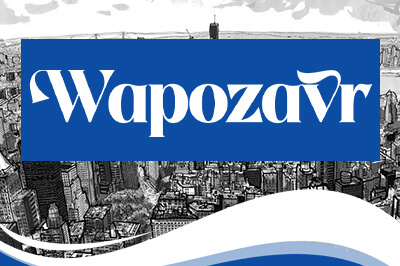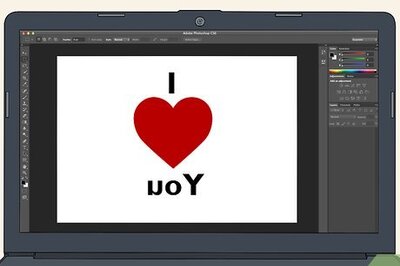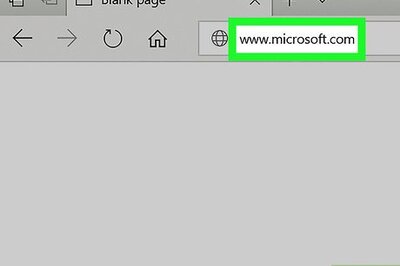
views
How to Withdraw Funds from a Brokerage Account
Select the Account button. This is the little person icon on the app. On PC: Log in to your account online and tap the Account button at the top right.
Tap on Menu. The menu button is the three horizontal bars. On PC: Select the Transfer tab at the top.
Select the Transfers option and hit Withdraw. Enter how much you want to take out. You can enter any amount up to the total cash available listed on the screen for that account. If you’re withdrawing cash from a margin account, you may see a warning if you withdraw more than the margin account requires to stay above the margin call threshold. We recommend not taking more money out than you need to if you have an open margin loan.
Select the linked external account you want the money to go to. You can send the money to any authorized account you’ve already linked. If you haven’t linked any accounts, do that first in the Account menu. Warning: You will be charged a fee if you select the Instant Transfer option. If you can wait 1-3 days for the money to be moved, opt for the free transfer.
Confim your details and select Transfer. Make sure that everything on your screen looks correct. If it does, tap the Transfer button and your money will be transferred.
How to Withdraw Funds from a Spending Account
Select Spending and tap on Transfer. Open the Robinhood app or log in online.The Spending menu on the app is the $ icon from your home page.
Tap on the bank account you want to transfer funds to. If you haven’t linked an external bank account, tap on the Linked Accounts option at the bottom. Then, select the Add Account option. If you are linking an account, select the bank account option if you want to save yourself from a 1.75% fee. Transferring to a debit card will incur this fee, but your money will be usable immediately.
Withdrawal Rules by Account Type
Taxable Investing Accounts Taxable brokerage accounts are probably the most common option among Robinhood users. These are investing accounts where you can buy and sell stocks and bonds, but any capital gains are taxable at the end of the tax year. There are two types of taxable accounts—cash and margin. Cash Accounts: These are taxable investing accounts where you can only use the money you deposit to invest. Funds are subject to settlement periods and you cannot trade options on these accounts. Are there fees for withdrawing cash? No. You can freely transfer funds in or out of a Robinhood taxable account if you’re doing a traditional bank-to-bank ACH transfer. Can I transfer my holdings? Yes, but you’ll need to pay a $100 fee. Margin Accounts: These are taxable investing accounts that get around settlement issues via margin—funds you borrow from Robinhood for a small fee. This is the most popular account type for active traders. Are there fees for withdrawing cash? No, but you may be charged if you withdraw more cash than you’re supposed to. You must hold a certain amount of cash in your margin account to cover any margin calls. Contact Robinhood at 1-650-761-7789 to have them take a closer look at your account. Can I transfer my holdings? Yes, but you’ll still need to pay a $100 fee. Key Notes: If you move all of your cash and you’re borrowing anything via margin, Robinhood may start selling your positions without your permission to cover the loan.
Retirement Investing Accounts Retirement accounts, like 401ks, 529 accounts, IRAs, and HSAs are investing accounts where the government cannot tax your gains the same way they normally would in a taxable account. Robinhood only offers Individual Retirement Accounts (IRAs), which allow you to invest for retirement. Withdrawing or transferring funds out of a retirement account can trigger serious tax events and penalties, so do not withdraw without checking the rules first. Traditional IRAs: Traditional IRAs tax the funds when they’re withdrawn after retirement and reduce your taxable income when you fund them. You can only upload $7,000 a year to a traditional IRA. Are there fees for withdrawing cash? No, but if you withdraw the cash there will be taxes and penalties. Can I transfer my holdings? Only if you roll them over to another traditional IRA or 401k plan. There may be fees for rollovers at the brokerage you send your account to. Key Notes: Instead of withdrawing anything, consider rolling the entire account over if you want to keep it another brokerage. It’s the best way Roth IRAs: Roth IRAs are the opposite of traditional IRAs regarding when the funds are taxed. Roth IRA funds are taxed on the way into the account, but whatever grows inside of that account grows tax free and won’t be subject to capital gains when you withdraw. Are there fees for withdrawing cash? No. However, you can only withdraw the initial deposits into the account. You cannot withdraw more than the total deposits or you’ll trigger IRS penalties. Can I transfer my holdings? Yes, but you must roll them over. There may be fees for rollovers at the brokerage you transfer the account to.
Traditional Bank Accounts Robinhood also offers what they call a “Spending Account.” It’s just a traditional debit account with a few quirky features. For example, you can opt into “round-ups” where spare change is automatically invested, and you can get “paid early” with loan prior to your paycheck being cleared. Spending Account: This is functionally just a regular bank account. Are there fees for withdrawing cash? No.
Crypto Accounts Robinhood offers one investment account exclusively for crypto which they aptly name their “crypto account” option. Crypto Accounts: This is Robinhood’s only option if you want to buy or sell cryptocurrencies. Notably, this is a custodial account, which means any crypto in the account isn’t exclusively in your possession. You need to create a crypto wallet if you want to be the sole holder of your crypto. Are there fees for withdrawing cash? No. However, you will need to pay a gas fee if you’re withdrawing Etherum (ETH). Can I transfer my holdings? Yes, but you will need to verify your identity and add two-factor authentication to your account first.
Why can’t I withdraw cash from a holding I sold?
You must wait for the T+ period to pass. When you sell a stock, bond, or ETF, the funds from that sale are held by the brokerage for the 1-3 days to pass. This is called T+1 or T+2 (trading day + 1 day/2 day). It’s a regulatory issue, so there’s no way around it. Robinhood must wait for all of your funds to settle before they are converted to transferable cash. What if I have a margin account? Margin accounts ignore T+1 or T+2 when it comes to using the funds inside of the account, but if you’re withdrawing money everything must settle like normal, first. Robinhood may let you enter the transfer order, but the money won’t move until all funds are settled first.
Are there fees to transfer positions?
Per their policy, it does seem like they’ll charge you $100. Most brokerages don’t charge you money to rollover a retirement fund, but Robinhood does appear to have this language in their policies. Robinhood uses an Automated Customer Account Transfer Service (ACATS) to move specific shares of stock, bonds, or ETFs to other institutions. It charges a $100 fee for this service regardless if you’re moving everything in your account or just a handful of shares. Pro tip: Call the brokerage you’re transferring your holdings to and explain that you’d love to move over to their platform, but you can’t afford the $100 fee Robinhood wants to charge. The other brokerage will probably cover the fee for you in exchange for your business. Just to highlight how common this is, Robinhood does it!
How do I transfer an IRA out of Robinhood?
You must perform an account rollover to move an IRA penalty-free. Rollovers are not automated, so this isn’t the kind of thing you can do by pressing buttons online. You must contact the brokerage you’re moving the account and ask them, “How do I rollover an IRA from Robinhood to your platform?” They’ll provide you the brokerage-specific paperwork you need to fill out. Then, contact Robinhood at 1-650-761-7789 and explain you want to roll the funds over. They’ll fulfill your order. Because IRAs are tax sheltered, the federal government monitors IRAs very closely. You can’t just roll an account on your own—the brokerages have to do it. You may be given an option to liquidate the IRA or withdraw it to your custody first. Do not do this if you don’t want to pay penalties or taxes. The account can only avoid being penalized if it goes directly from one brokerage to another.
Are there fees for debit card withdrawals?
Yes, Robinhood charges a 1.75% fee for debit card withdrawals. If you want your money immediately, Robinhood will transfer your funds to a debit card for a flat percentage fee. This fee will run a minimum of $1 and a maximum of $150 per transaction. So, if you want to go this route, it’s best to move all of the money you want to transfer in one transaction. Opt for an ACH bank transfer if you want to avoid fees. Automatic clearing house (ACH) transfers are the most popular bank-to-bank transfer option among users because it’s safe and free. All you need are your bank’s routing number and your account number to set up a transfer.
Is there a limit on how much I can withdraw?
Yes, you can only withdraw $50,000 a day. To be clear, there is no penalty or restriction on withdrawing $50,000 a day for consecutive days, so unless you’re moving millions of dollars you should be able to move your money in a relatively reasonable amount of time. The limit is $250,000 a day for ACH transfers initiated by a bank, title company, or some other financial institution. This is the standard withdrawal limit among basically all brokerages because $250,000 is the maximum amount insurable by the FDIC, so banks are hesitant to move more than that amount at a time. If you need to move more than $250,000, you’ll need to do it over the course of multiple days.




















Comments
0 comment